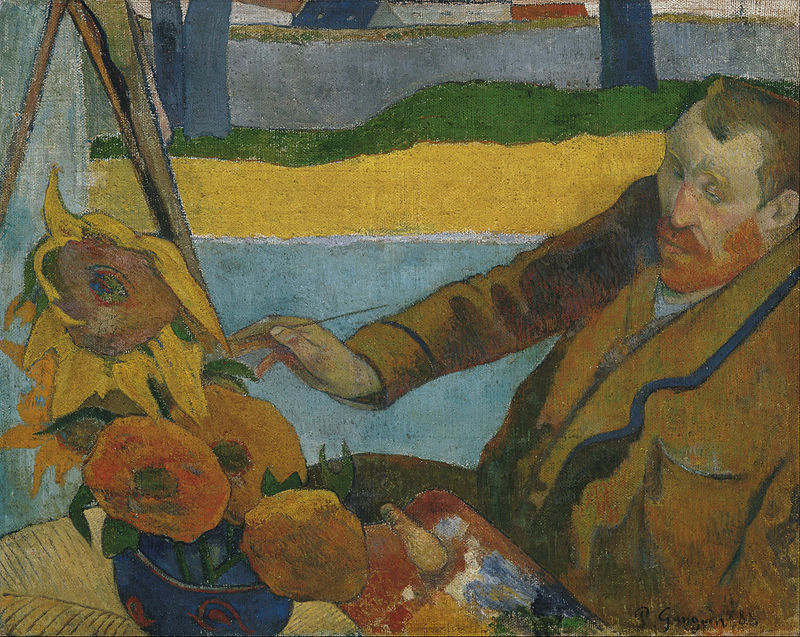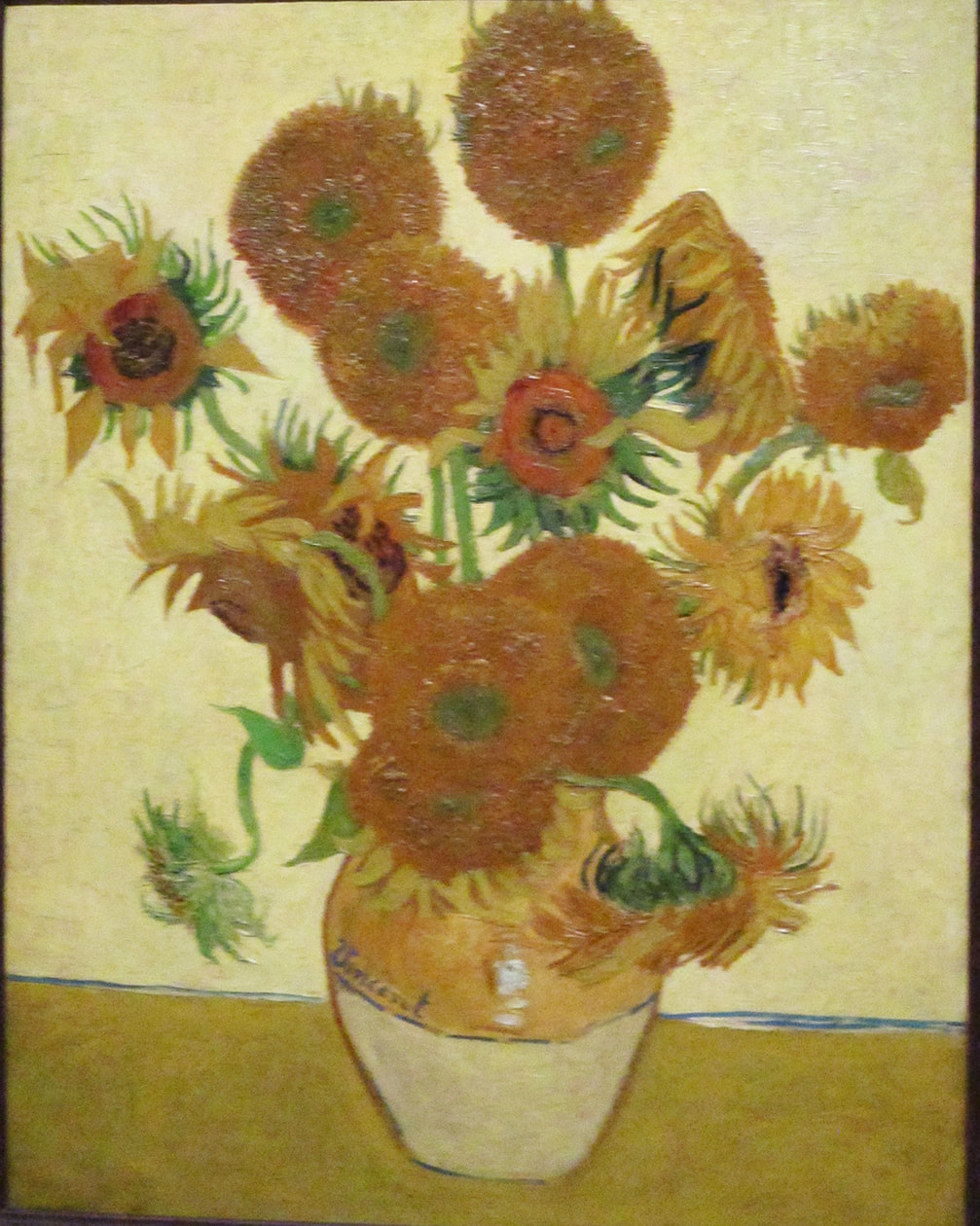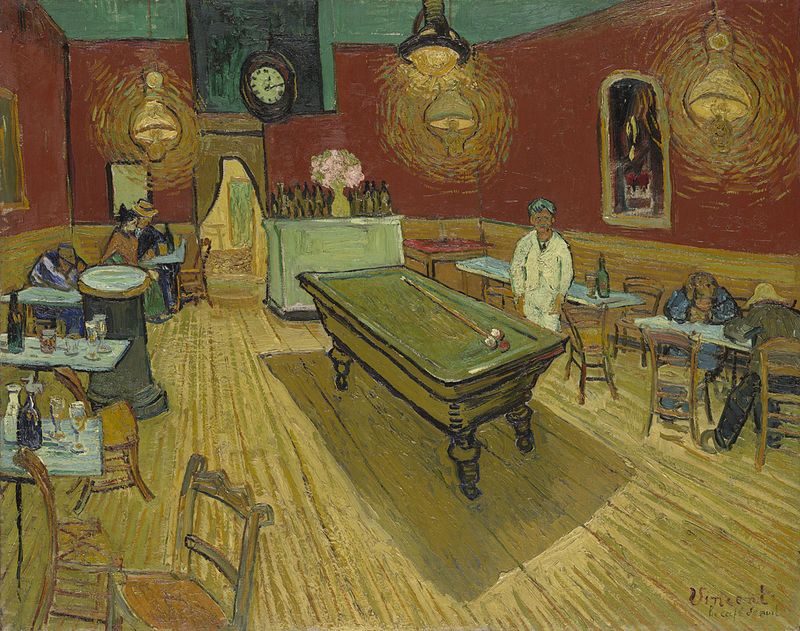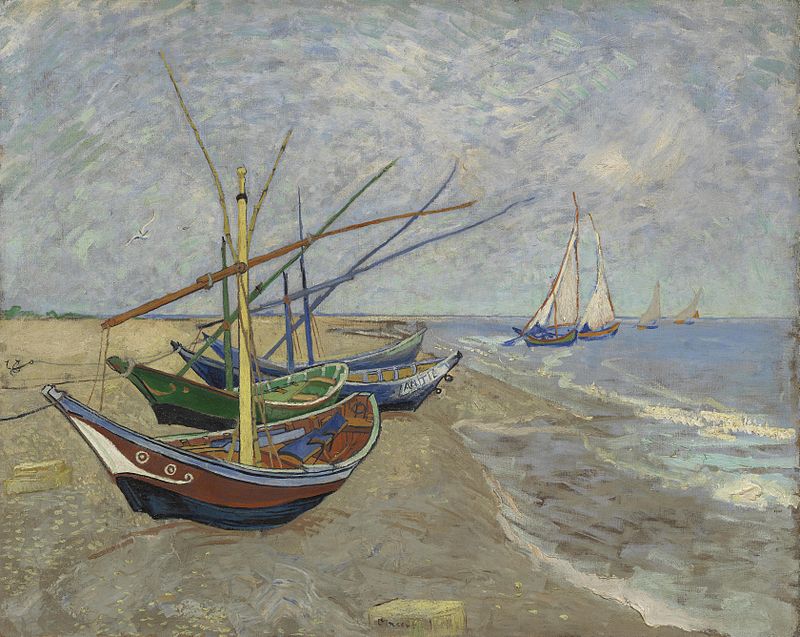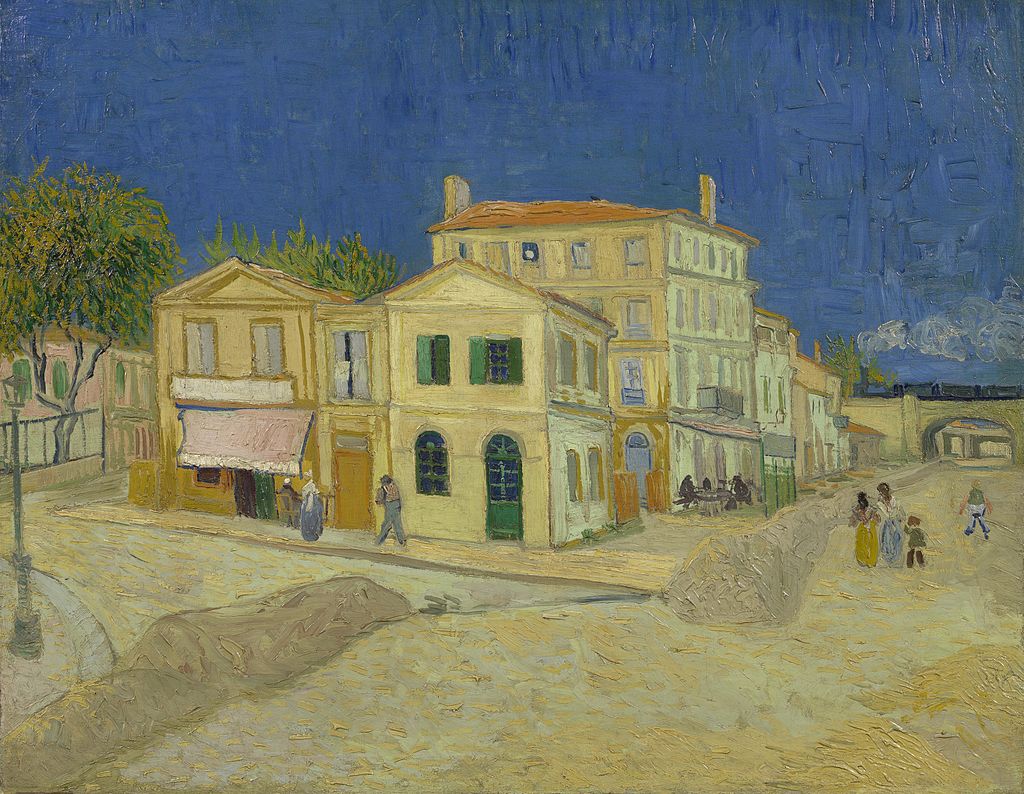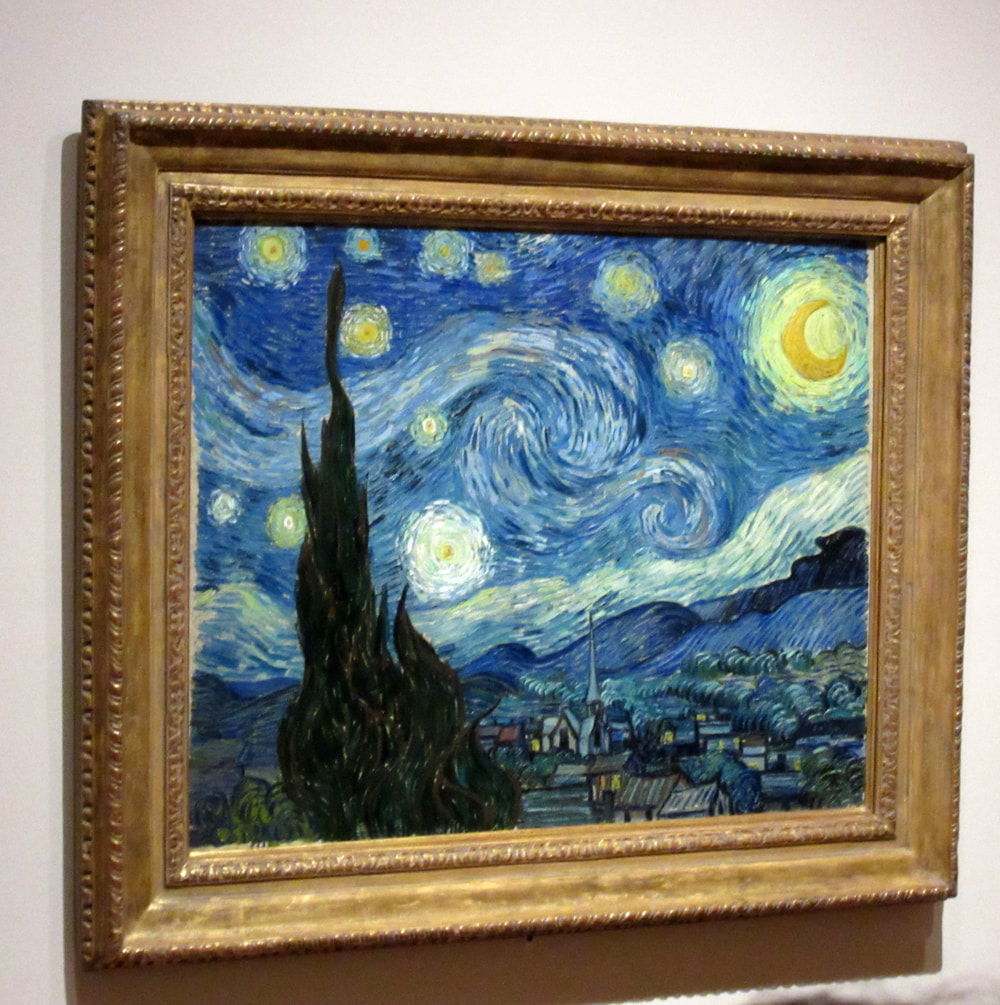AN APPRECIATION: Vincent Van Gogh
|
Above: Paul Gauguin's portrait of Van Gogh painting a picture of sunflowers.
Below: One of Van Gogh's paintings of sunflowers. Above: "The Night Cafe."
Below: "Three Fishing Boats" from Vincent's trip to Saintes-Maries-de-la-Mer. Above: The "Yellow House" in Arles.
Above: Van Gogh's portrait of Joseph Roulin who came to visit Van Gogh in the hospital at Arles.
Below: The masterpiece "Starry Night" was painted while Vincent was in the asylum at St. Remay. |
Artist appreciation - Vincent Van Gogh (Part III Triumph and Failure)
